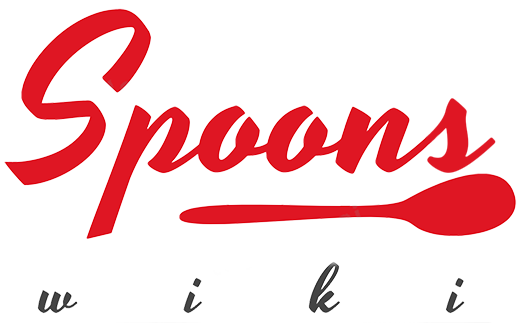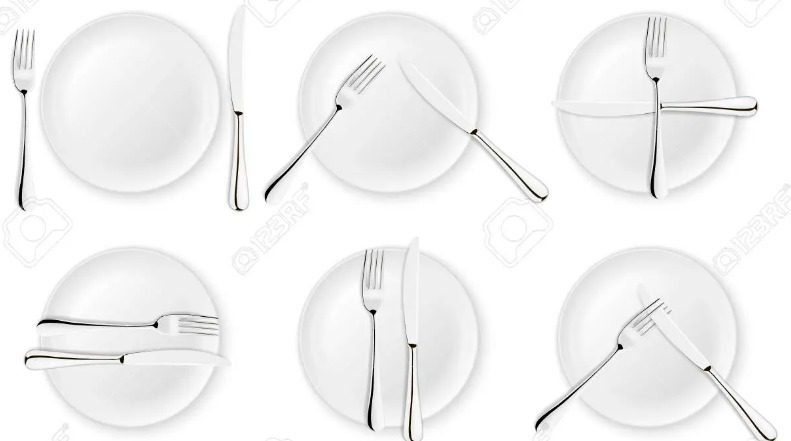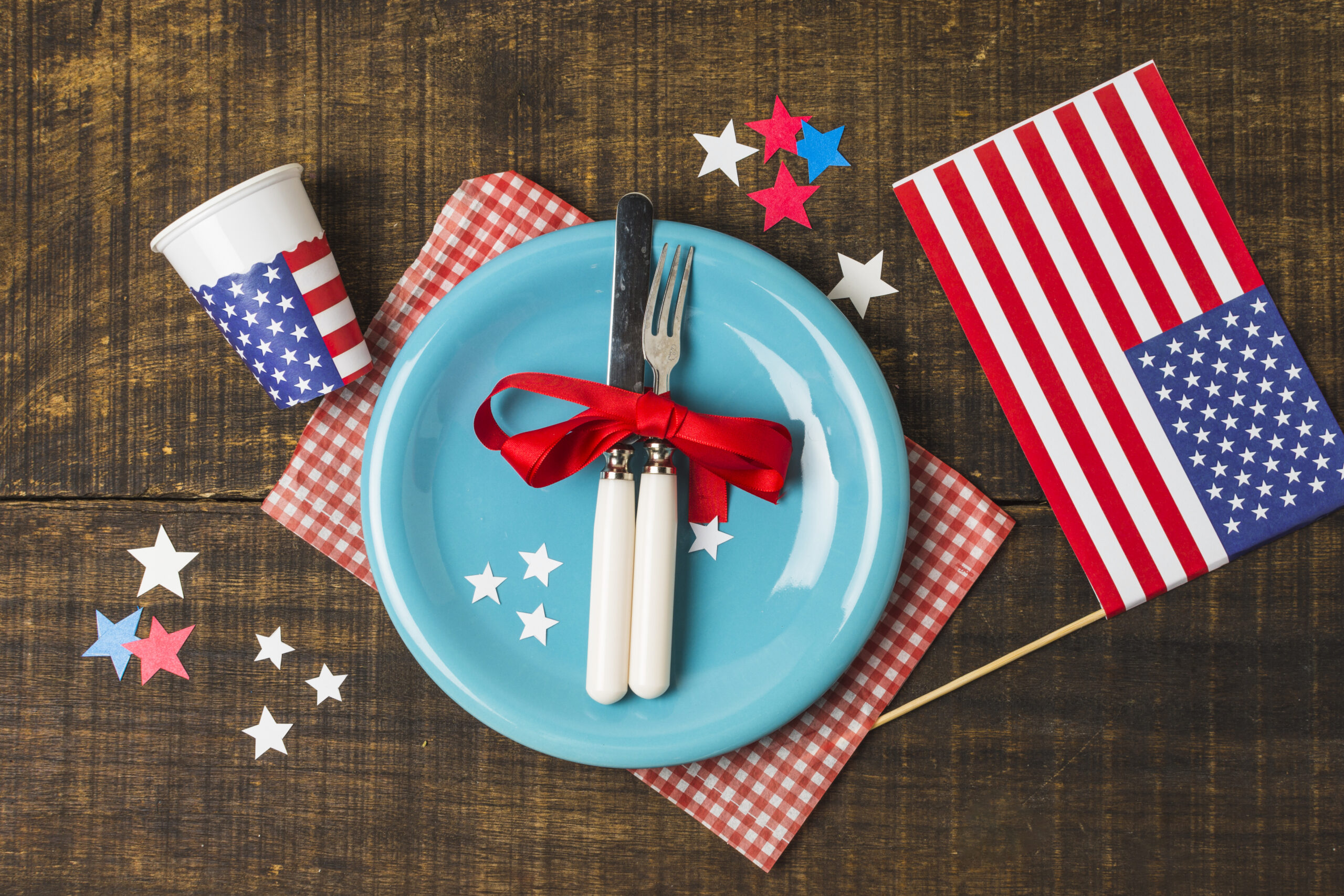Spoon and Fork Etiquette: From Clumsy to Classy
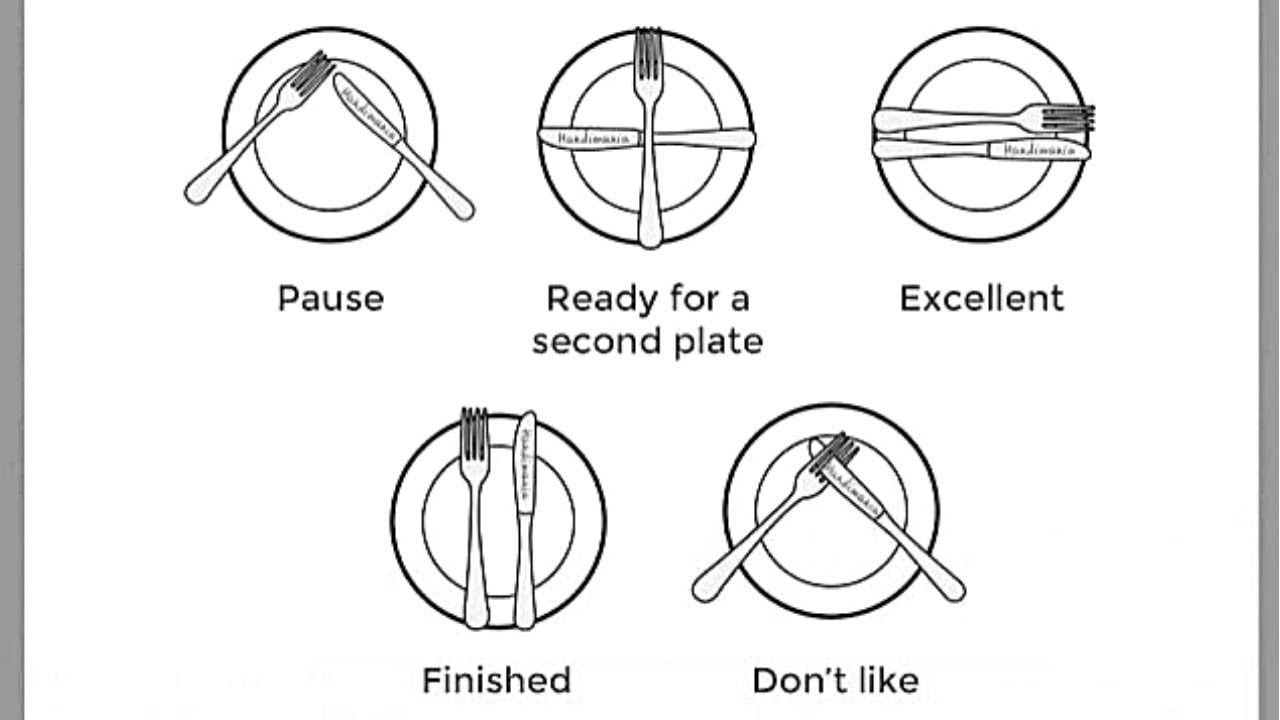
Thanks to our readers, for choosing Spoons.wiki Team to get reliable information. This article was originally published on September 9, 2022. Updated September 3, 2023.
The rules of how to use knives, spoons, and forks have evolved along with the utensils’ shape. In general, spoon and fork etiquette is to ensure that while using cutlery it does not look rough and odd.
Cutlery Etiquette is a set of rules for correctly using forks, spoons, and knives. These spoon and fork etiquettes will help you avoid behavior that could be rude and annoying to the host or other guests. If you’re a guest, or just gathering information, check out the basic cutlery etiquette below to learn how to place your cutlery correctly.
Read More: Where are Spoons placed in American Style Setting?
Basic Placement
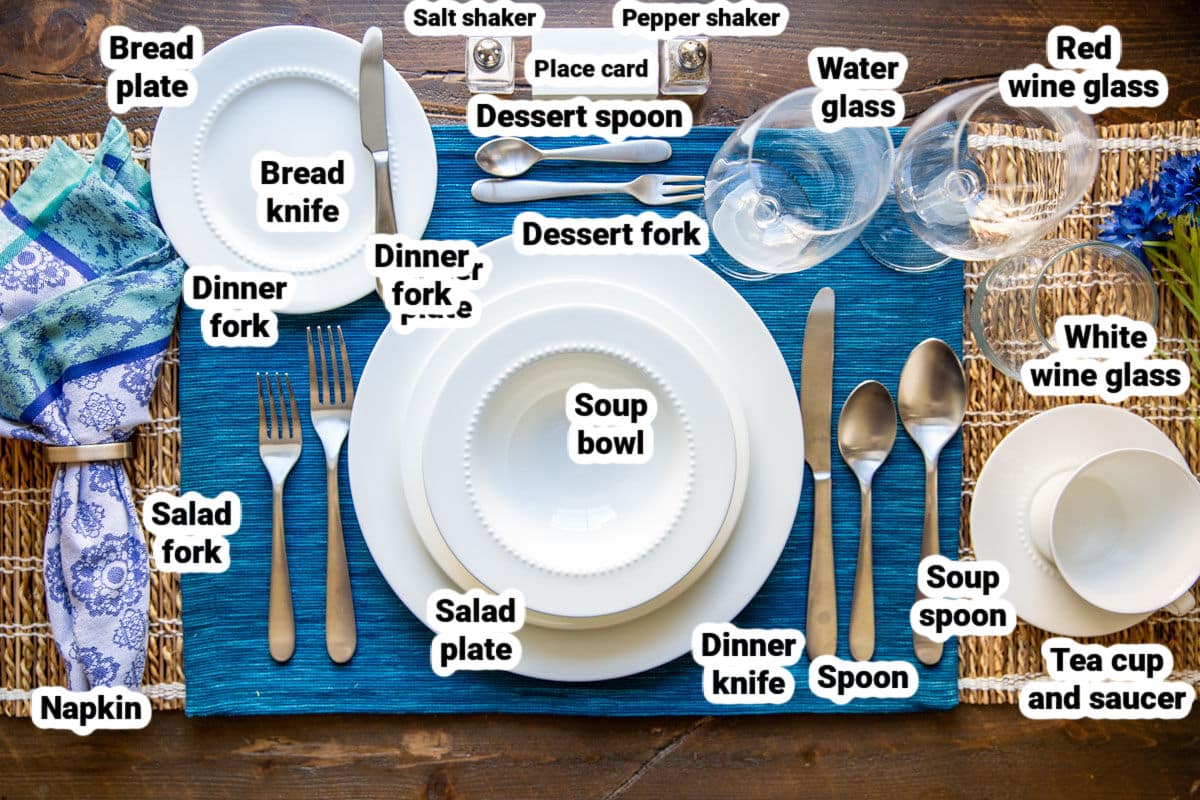
When it comes to setting the table, proper placement of your spoons and forks is key. But where do they go? Fear not! We’re here to guide you through this first step of spoon and fork etiquette.
Let’s start with the basics. The general rule is that your utensils should be placed in the order they will be used, from the outside in. So if you’re having a multi-course meal, make sure to arrange them accordingly.
As for positioning, your fork generally goes on the left side of your plate, while your spoon sits on the right. If you’ll be using both a salad fork and a dinner fork, place them in their respective spots – the salad fork on the outermost left position and the dinner fork next to it.
Now let’s tackle those spoons. If you have multiple types of spoons (such as soup or dessert spoons), arrange them from closest to furthest away from your plate – with the soup spoon closest and the dessert spoon farthest.
Remember, proper placement isn’t just about aesthetics; it also helps prevent confusion during dining. By following these simple guidelines for basic placement, you’ll showcase your knowledge of dining etiquette without missing a beat!
⭐ Furthermore, you can also set your table like in the image shown above.
Handling Utensils
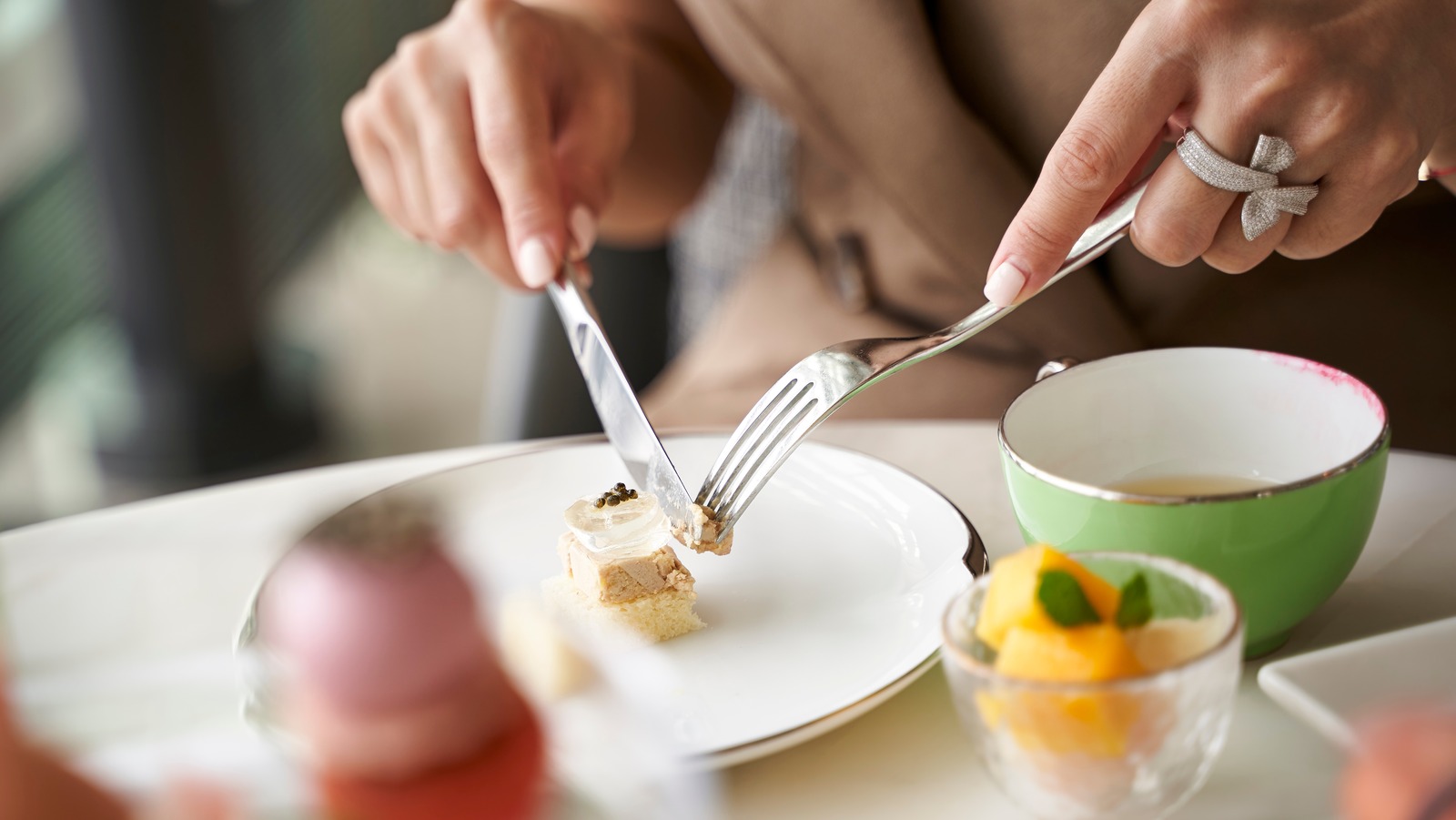
When it comes to proper spoon and fork etiquette, knowing how to handle your utensils is essential. It not only shows respect for the food you’re eating but also for those around you. Here are some tips on handling utensils with finesse.
First and foremost, always hold your spoon and fork correctly. Hold the fork in your left hand with the tines facing down, while holding the spoon in your right hand. Remember to grip them gently but firmly – no need to have a vice-like grip!
When using both utensils together, use them gracefully by twirling spaghetti or noodles onto your fork without splattering sauce everywhere. Take small bites that are manageable and avoid making loud clinking noises against the plate.
If you need to take a break during your meal, place your utensils side by side diagonally across the center of your plate. This signals to others that you are still enjoying your meal but taking a brief pause.
Never pass used utensils directly from one person’s hand to another’s; instead, place them on a nearby plate or ask for assistance if needed. Passing utensils should be done discreetly and smoothly so as not to disturb other diners.
Remember that different cultures may have varying rules when it comes to table manners and handling utensils. The Continental style involves keeping both hands visible at all times while eating whereas the American style allows resting one’s wrists or forearms on the edge of the table.
Mastering proper spoon and fork etiquette takes practice, but once learned it becomes second nature. So next time you sit down for a meal, put these tips into action and impress everyone at the table with your refined dining skills!
Order of Use
When it comes to proper spoon and fork etiquette, knowing the correct order of use is essential. This ensures that you navigate your way through a meal smoothly and avoid any confusion or embarrassment.
First and foremost, it’s important to remember that utensils are used from the outside in. This means that the outermost utensil should be used for the first course, while subsequent courses will require using utensils placed closer to your plate.
For example, if you are starting with a salad as your first course, you would begin by using the fork farthest away from your plate. As each new dish is served, move inward and use the appropriate utensil for that specific course.
It’s also worth noting that spoons are typically used for soups or dishes with sauces. In this case, once again start with the outermost spoon and work your way in as additional soup or saucy dishes are served.
By following this order of use guideline, not only will you demonstrate good table manners but also ensure a seamless dining experience for yourself and those around you.
Remembering these simple rules can make all the difference when it comes to mastering spoon and fork etiquette at formal dinners or even casual meals with friends. So next time you find yourself faced with an array of cutlery options on either side of your plate, take a moment to assess which one should be picked up first based on their placement.
Resting Position
When it comes to proper spoon and fork etiquette, knowing the resting position of your utensils is key. The resting position refers to where you place your utensils when taking a break during a meal.
After using your spoon or fork, simply rest them on the plate in front of you. The handle should be facing towards the right side of the plate while the business end of the utensil remains on the plate itself.
Remember, never leave your utensils hanging over the rim of your plate or bowl. This can appear messy and unrefined. By placing them neatly on the plate, you show respect for yourself and those dining with you.
The resting position also applies when you have finished eating but are not quite ready for dessert or coffee yet. In this case, cross your knife and fork diagonally across each other on top of your empty plate.
By following these guidelines for proper resting positions, not only will you demonstrate good table manners but also contribute to an organized and polished dining experience for everyone involved.
Passing Utensils
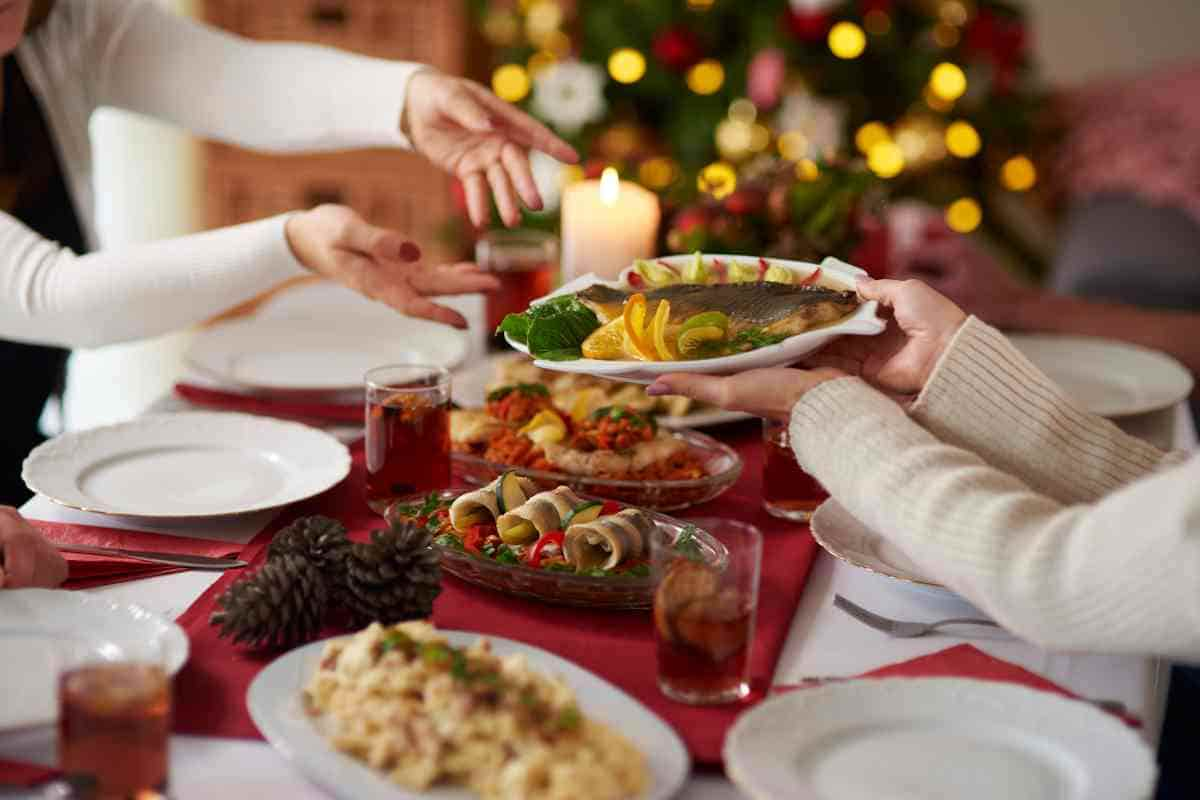
Passing utensils during a meal is an important aspect of table etiquette that shows consideration and respect for others. When it comes to passing utensils, there are a few guidelines to keep in mind.
Always pass the serving spoon or fork with the handle facing towards the person receiving it. This makes it easier for them to grasp without touching the part that has come into contact with food.
If you are passing individual utensils such as a spoon or fork, hold it by the handle and offer it to the person on your left or right, depending on how you are seated. Be sure not to touch any part of the utensil that will come into contact with their mouth.
It’s also important to wait until someone reaches out for a utensil before handing it over. Avoid reaching across other people’s plates or interfering with their eating space.
If someone asks you to pass something specific like salt or pepper, always hand over both items together even if they only requested one. This saves time and avoids any potential confusion.
Remember that passing utensils should be done seamlessly and discreetly without disrupting conversations or drawing unnecessary attention. It’s all about maintaining harmony at the dining table while ensuring everyone has what they need within reach.
By following these simple guidelines when passing utensils, you can contribute to creating an enjoyable dining experience for everyone involved!
Continental vs. American Style
When it comes to spoon and fork etiquette, there are two main styles that people often follow: Continental and American. These styles differ in their approach to utensil usage and table manners.
In Continental style, the fork is held in the left hand with the tines facing down, while the knife is held in the right hand. This allows for a seamless transition between cutting food with the knife and spearing it with the fork. The spoon is typically only used for soups or desserts.
On the other hand, American style involves holding both the fork and knife throughout the entire meal. The fork is held in the left hand, tines still facing down, while using a zigzag motion to cut food with one’s right hand holding a knife.
Both styles have their merits and are widely accepted depending on cultural norms or personal preferences. It’s important to note that whichever style you choose to follow, practicing good table manners should always be prioritized.
Remembering which utensils to use when dining can seem overwhelming at first but with practice, it becomes second nature. So whether you lean towards Continental or American style of dining etiquette, keep in mind that respect for others at your dining table should always take precedence over any particular method of eating!
Things You Shouldn’t Do While Eating With Spoon & Fork
❌Spoons and forks are made of steel and have the potential to make annoying noises that can offend others if not used properly. It can be avoided by eating carefully and slowly. You can prevent such problems by taking time to enjoy your meals.
❌Do not use your fingers to press down on food with a fork; use a fork or spoon instead.
❌Avoid dropping food while eating into the plate from the fork.
How to Hold Forks and Spoons?
We usually hold spoons and forks with the wrong hands. For example, in European culture, a knife is held in the left hand, and a fork is held in the right hand. In this case, the knife’s edge should point towards the plate. In the same way, hold the fork and spoon in front.
To cut pieces of food, hold with a fork and cut with a knife (until pieces are in the mouth). Americans also cut food using forks and knives. After using the knife, put it on a plate and put it in your mouth piece by piece with a fork.
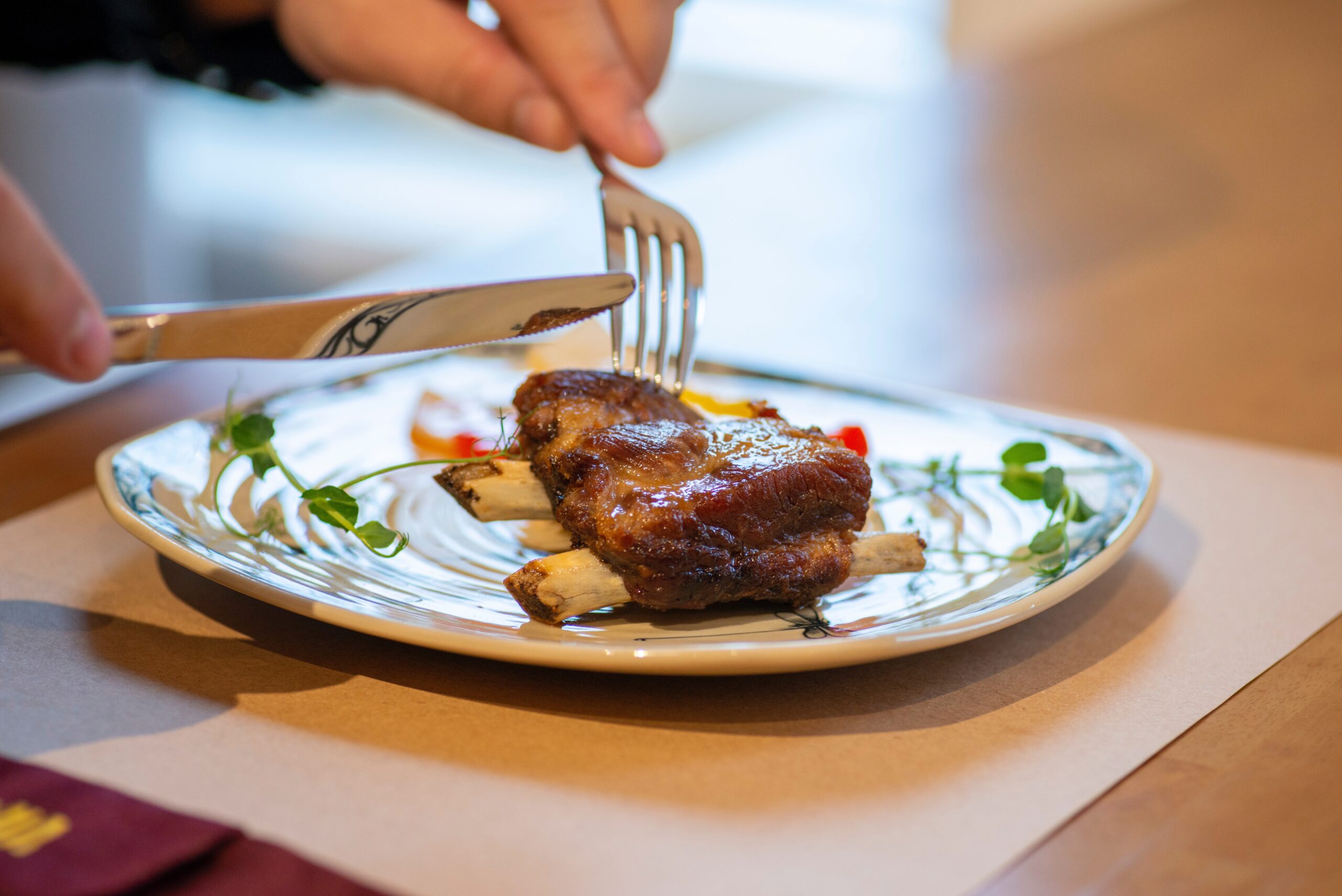
How to Eat Using Spoon and Fork?
Spoon
In general, you should only use a spoon to eat the soup. The correct way to do this is to hold the spoon sideways on the edge of the bowl away from you and remove it before scooping out the soup.
When eating, drink only from the side of the spoon. Do not swallow everything at once as much as you want. Also, don’t make any squeaks. When eating soup, some liquid is always left in the bowl, making it difficult to scoop up with a spoon. You can regularly hold the bowl and pour it into your mouth. However, if you want proper dining etiquette, tilt the bowl away from your body and scoop it up with a spoon.
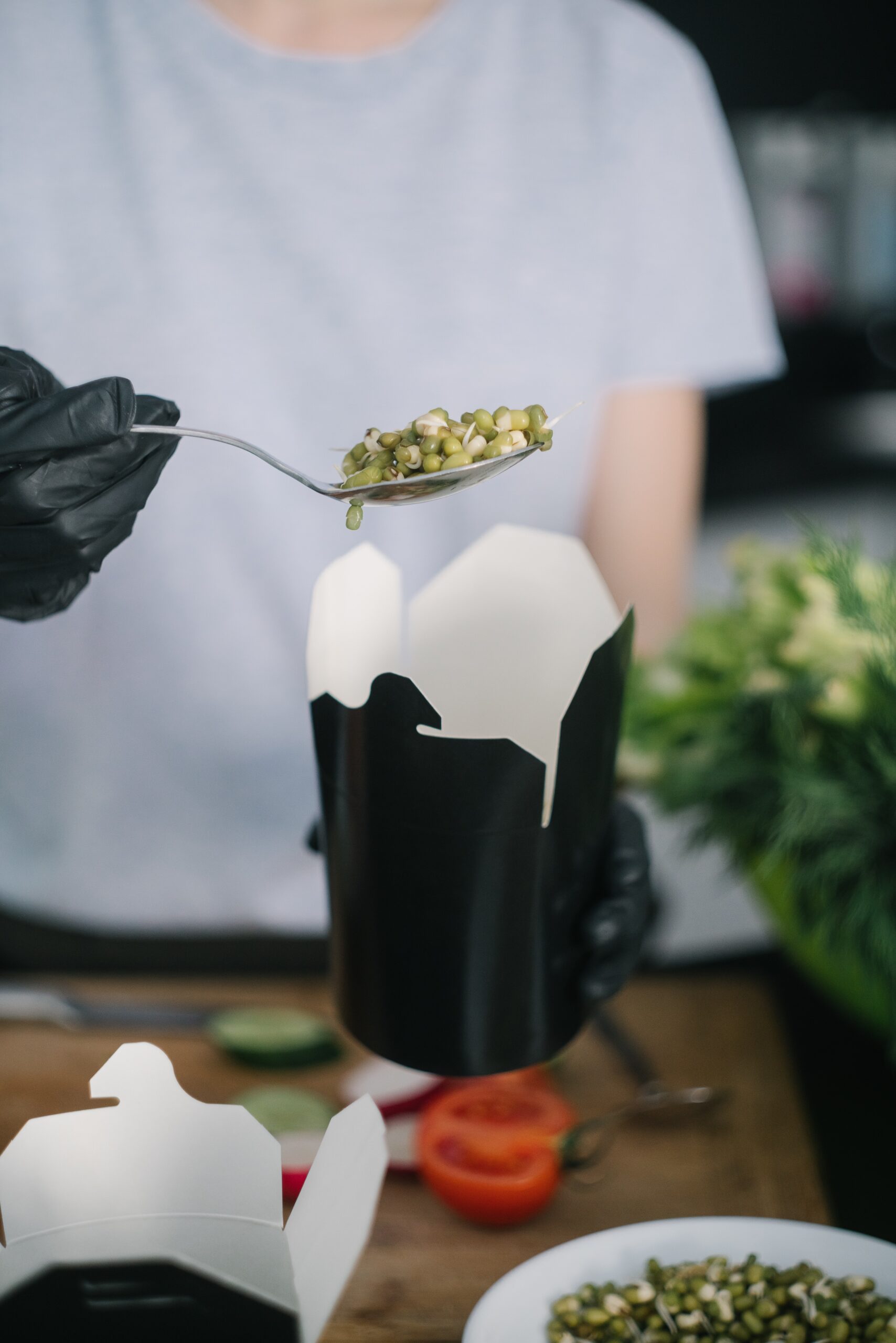
Fork
You will most likely use a fork for eating rice or small items. Everyone pierces food, but this is not the right way; you have to eat it like scooping up food.
I know the fork isn’t the easiest tool to eat, but this is the right way to go. If you run into big trouble, you can use a knife, which is what Europeans always do.
How to Rest Cutlery If you are Taking a Break?
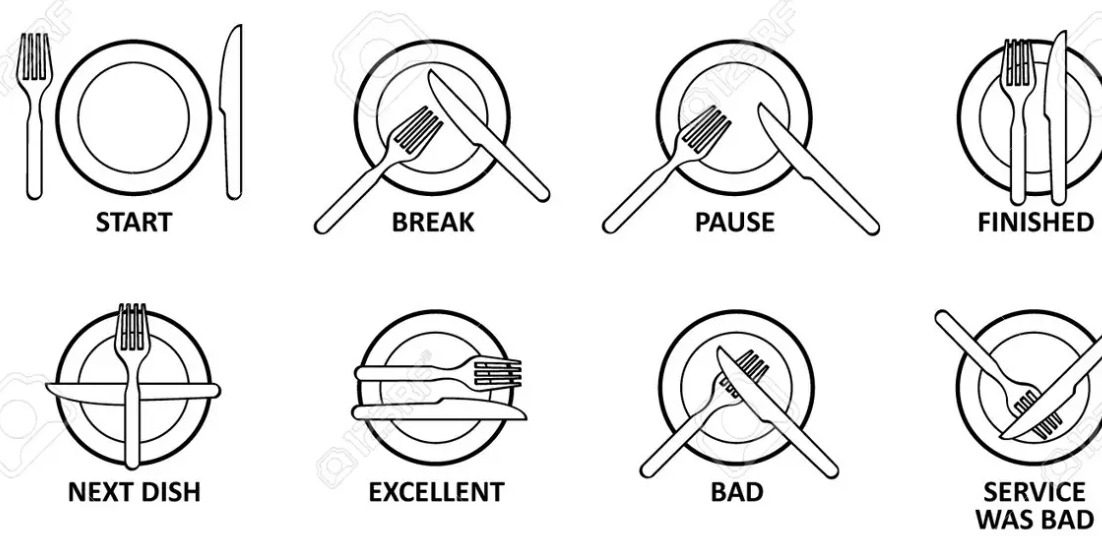
How you place your fork, knife, and spoon on your plate indicates whether you are resting or finished eating. There are two ways to leave a plate at mealtime if you take a break.
- Pyramid
- Parallels distant Lines
In Pyramid Pose, place the fork and knife in the center of the plate with the tips facing each other. With the fork facing down, put the handle in the 8 o’clock position. Place the knife with the blade inward and the handle at 4 o’clock.
Place the knife diagonally in the upper right corner of the plate with the blade facing inward at the location of the distant parallel. Place the fork in the upper right corner of the plate with the tines facing down. Trained waiters should recognize these two positions as a sign that they don’t want to take the plate.
How to Set Your Spoons and Forks on the Table?
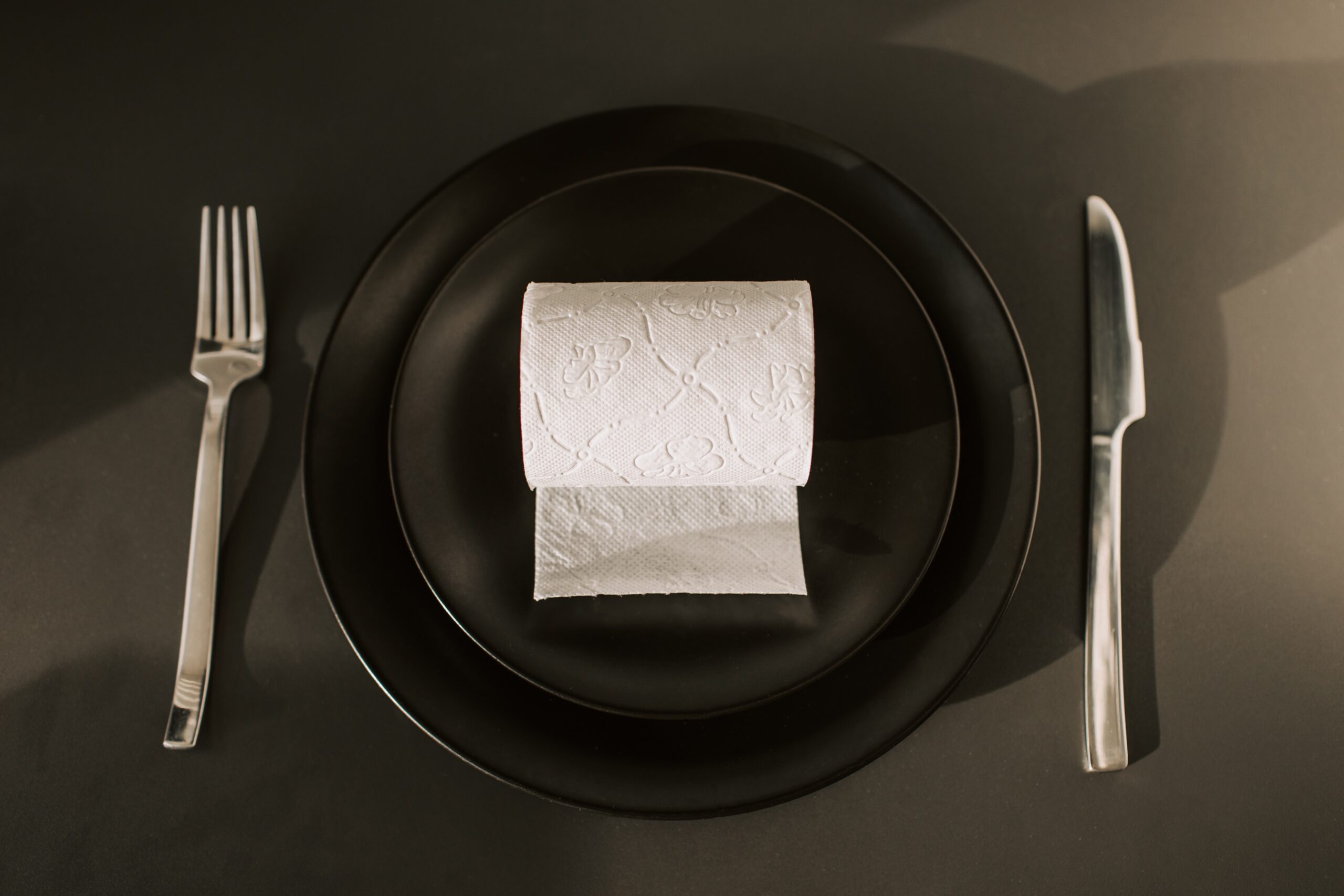
If you are hosting a dinner, you should strive for excellence. It achieves perfection through minor details, including the arrangement of cutlery on the table. A simple rule is that spoons, forks, and knives should be placed next to the plate. It is called the outside-in rule, meaning the eater must first use the knife outside.
Somehow this is your responsibility for placement. Because it depends on the food served. Serving the salad first, the eater uses the fork first, so it must be placed outside. Spoons and knives must be placed on the right and forks on the left. They should all be about 1.5 inches from the plate. Other objects have a glass of water on the top right of the knife. Meanwhile, the bread plate moves to the far left.
The Language of the Cutlery on the Table
The language of cutlery is exciting and useful for communication. Here are some tips on how to do it right.
Tip 1: For lunch or dinner, a fork and knife should be placed in the center of the plate, and the tips facing each other form an inverted letter (V).
Tip 2: When you finish one plate, and the next dish is ready, it is correct to put the knife and fork in a cross shape and put the fork up and the knife to the left.
Tip 3: If you want to say thank you, you can place the spoon on the right. In this way, you will show your staff that you like food. However, some things clearly show that the food did not come out properly. For this, placing the spoon in the same position as the break time is correct. However, at the same time, sandwich the tip of the knife and the teeth of the fork. Post-meal cutlery placement is all you need to do is place the knife and fork in the center of the plate straight up and down, and the plate can be removed.
FAQs
Q. Which hand do you hold the fork and spoon?
Traditionally, the fork is held in the left hand and the spoon is held in the right hand.
Q. What are the rules for forks and spoons?
There are no strict rules for using forks and spoons, but some general guidelines include using the fork to spear or pick up food, and using the spoon to scoop or stir food.
Q. Which hand should you hold a fork?
The fork is typically held in the left hand while eating, with the tines facing downwards.
Q. What is the etiquette for eating with a spoon?
When eating with a spoon, it is generally considered polite to hold the spoon in your dominant hand (usually the right hand) and use it to scoop food towards your mouth. Avoid slurping or making excessive noise while eating.
Q. Is it proper to eat with the fork in the right hand?
In many Western cultures, it is considered proper to hold the fork in the left hand and the knife in the right hand while eating. However, there may be variations in different cultures and dining situations.
Q. What is fork etiquette?
Fork etiquette refers to the proper manners and behavior associated with using a fork while dining. This includes holding the fork correctly, using it to pick up food, and using it in a polite and respectful manner.
Q. Which fork do you grab first?
When dining in a formal setting, it is customary to start with the outermost fork and work your way toward the plate as each course is served. The dessert fork is typically placed above the plate or brought out with the dessert.
Q. Why do people put the fork on the right?
The tradition of placing the fork on the right side of the plate is believed to have originated from European dining customs. It became a common practice to place the fork on the right side of the plate to make room for the knife, which is typically held in the right hand.
Q. Which hand should hold the fork in the UK?
In the UK, it is customary to hold the fork in the left hand and the knife in the right hand while eating. This is similar to the traditional Western dining etiquette.

